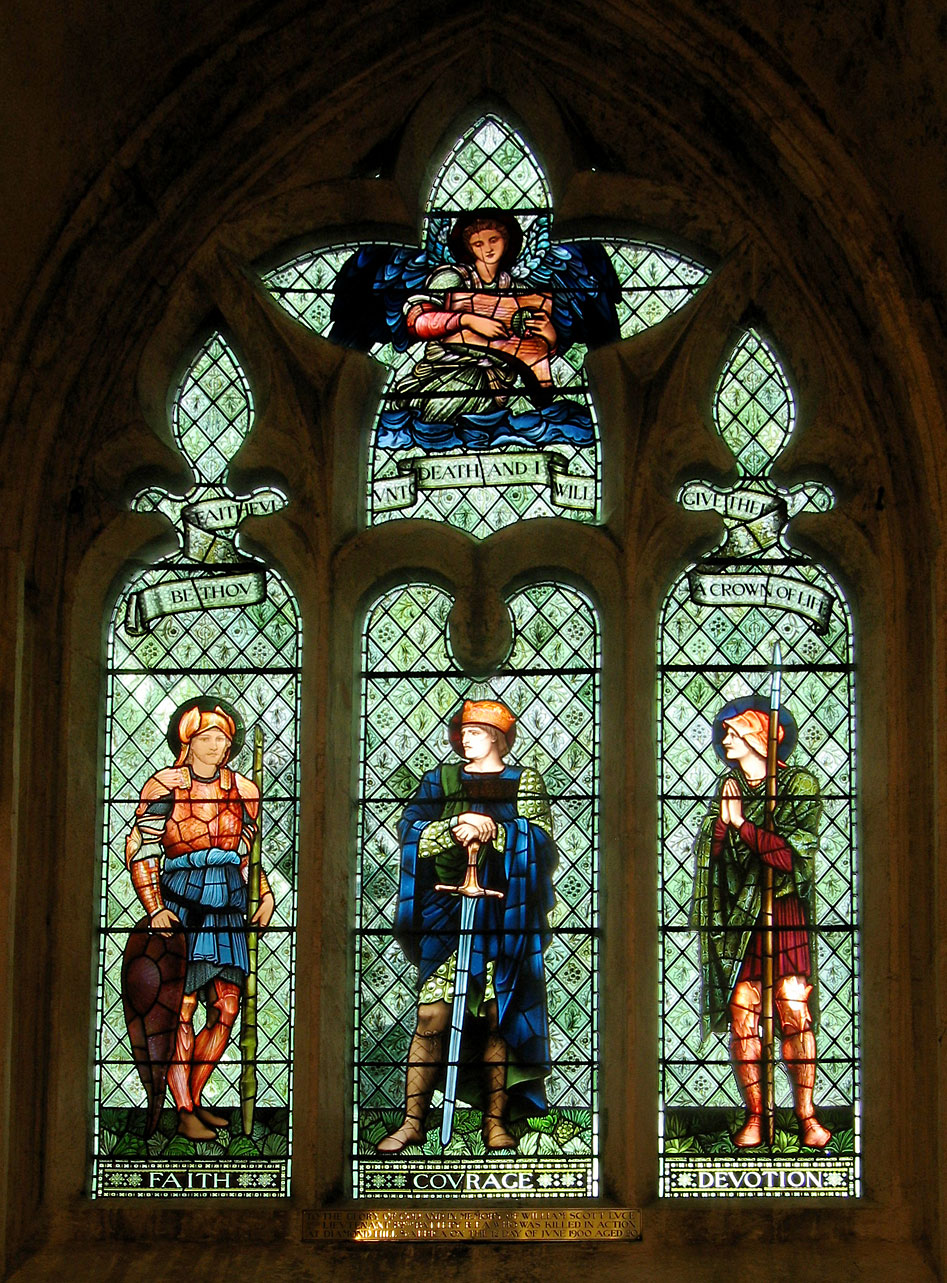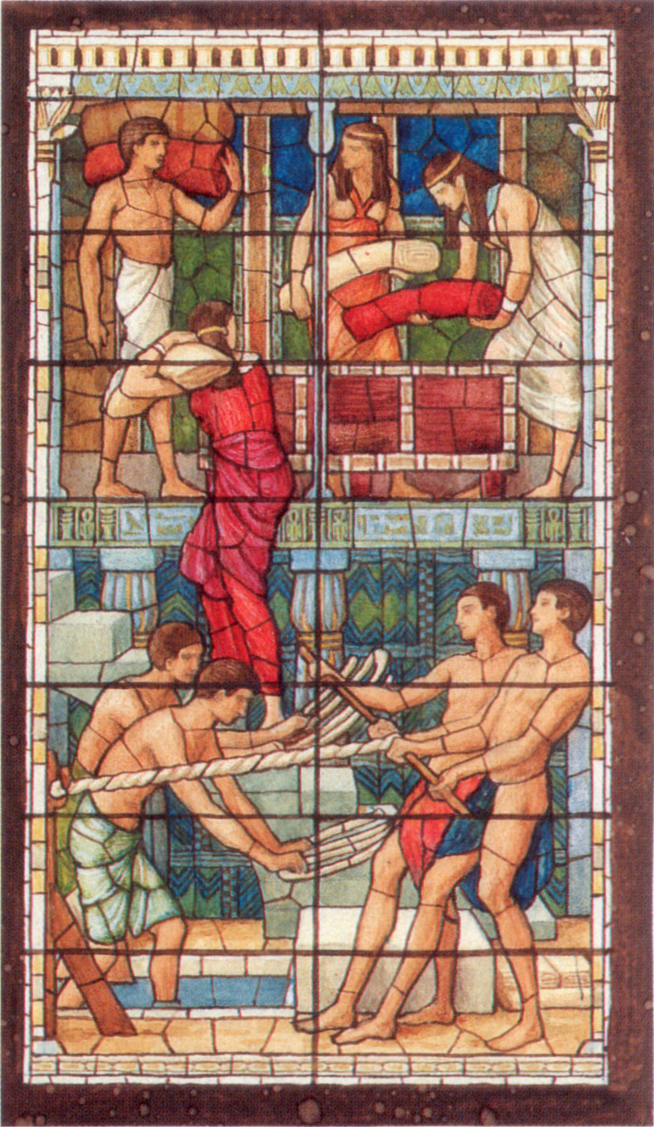|
Moravská Gobelínová Manufaktura
The Moravská gobelínová manufaktura (MGM), is a tapestry manufactory in Valašské Meziříčí in the Zlín Region of the Czech Republic. The manufactory has been involved in the area of handmade classical and artistic tapestries, restoring and also creating new pieces with modern themes for more than fifty years. It is considered the first tapestry manufactory in Czechoslovakia, and the only workshop of this kind in Moravia and Czech Silesia. The workshop, textile manufactory and museum, is also well known for its collaborative works with Czech artists and architects. Its main focus is deeply rooted in preserving the principal technical methods of fine manual work. The manufactory and school of Gobelin tapestry idealized by painter and tapestry designer Rudolf Schlattauer, has now been in activity for more than one hundred years. History The first stage in the history of the Moravská gobelínová manufaktura in Valašské Meziříčí dates back to the 19th century, when t ... [...More Info...] [...Related Items...] OR: [Wikipedia] [Google] [Baidu] |
Valašské Meziříčí
Valašské Meziříčí (; ) is a town in Vsetín District in the Zlín Region of the Czech Republic. It has about 23,000 inhabitants. The historic town centre is well preserved and is protected by law as an Cultural monument (Czech Republic)#Monument zones, urban monument zone. Administrative division Valašské Meziříčí consists of seven municipal parts (in brackets population according to the 2021 census): *Valašské Meziříčí (10,619) *Bynina (640) *Hrachovec (964) *Juřinka (476) *Krásno nad Bečvou (7,056) *Lhota (231) *Podlesí (1,723) Etymology The name ''Meziříčí'' literally means "between the rivers" and is related to its location on the confluence of rivers. The attribute ''Valašské'' (i.e. "Wallachian") refers to its location in the region of Moravian Wallachia. Geography Valašské Meziříčí is located about north of Vsetín and northeast of Zlín. The Vsetínská Bečva and Rožnovská Bečva rivers join in the town to form the Bečva River. T ... [...More Info...] [...Related Items...] OR: [Wikipedia] [Google] [Baidu] |
Jan Kotěra
Jan Kotěra (18 December 1871 – 17 April 1923) was a Czech architect, artist and interior designer, and one of the key figures of modern architecture in Bohemia. Biography Kotěra was born in Brno, the largest city in Moravia, to a Czech father and German-speaking mother. He studied architecture in Vienna during the waning days of the Austro-Hungarian Empire under the Viennese master Otto Wagner. Kotěra returned to Prague in 1897 to help found a dynamic movement of Czech nationalist artists and architects centered on the Mánes Union of Fine Arts. Strongly influenced by the work of the Vienna Secession, his work bridged late nineteenth-century architectural design and early modernism. Kotěra collaborated with Czech sculptors Jan Štursa, Stanislav Sucharda, and Stanislav's son Vojtěch Sucharda on a number of buildings. As a teacher, Kotěra trained a generation of Czech architects, including Josef Gočár, who would bring Czech modernism to its pinnacle in the years ... [...More Info...] [...Related Items...] OR: [Wikipedia] [Google] [Baidu] |
Manufacturing Companies Of The Czech Republic
Manufacturing is the creation or production of goods with the help of equipment, labor, machines, tools, and chemical or biological processing or formulation. It is the essence of the secondary sector of the economy. The term may refer to a range of human activity, from handicraft to high-tech, but it is most commonly applied to industrial design, in which raw materials from the primary sector are transformed into finished goods on a large scale. Such goods may be sold to other manufacturers for the production of other more complex products (such as aircraft, household appliances, furniture, sports equipment or automobiles), or distributed via the tertiary industry to end users and consumers (usually through wholesalers, who in turn sell to retailers, who then sell them to individual customers). Manufacturing engineering is the field of engineering that designs and optimizes the manufacturing process, or the steps through which raw materials are transformed into a final produc ... [...More Info...] [...Related Items...] OR: [Wikipedia] [Google] [Baidu] |
Manufacturing Companies Established In 1898
Manufacturing is the creation or production of goods with the help of equipment, labor, machines, tools, and chemical or biological processing or formulation. It is the essence of the secondary sector of the economy. The term may refer to a range of human activity, from handicraft to high-tech, but it is most commonly applied to industrial design, in which raw materials from the primary sector are transformed into finished goods on a large scale. Such goods may be sold to other manufacturers for the production of other more complex products (such as aircraft, household appliances, furniture, sports equipment or automobiles), or distributed via the tertiary industry to end users and consumers (usually through wholesalers, who in turn sell to retailers, who then sell them to individual customers). Manufacturing engineering is the field of engineering that designs and optimizes the manufacturing process, or the steps through which raw materials are transformed into a final produc ... [...More Info...] [...Related Items...] OR: [Wikipedia] [Google] [Baidu] |
Morris & Co
Morris, Marshall, Faulkner & Co. (1861–1875) was a furniture, furnishings and decorative arts manufacturer and retailer founded by the artist and designer William Morris with friends from the Pre-Raphaelite Brotherhood, Pre-Raphaelites. With its successor Morris & Co. (1875–1940) the firm's Middle Ages, medieval-inspired aesthetic and respect for craft, hand-craftsmanship and traditional textile arts had a profound influence on the decoration of churches and houses into the early 20th century. Although its most influential period was during the flourishing of the Arts and Crafts Movement in the 1880s and 1890s, Morris & Co. remained in operation in a limited fashion from World War I until its closure in 1940. The firm's designs are still sold today under licences given to Sanderson & Sons, part of the Walker Greenbank wallpaper and fabrics business (which owns the "Morris & Co." brand,) and to Liberty (department store), Liberty of London. Early years Morris, Marshall, F ... [...More Info...] [...Related Items...] OR: [Wikipedia] [Google] [Baidu] |
Textile Arts
Textile arts are arts and crafts that use fiber crop, plant, Animal fiber, animal, or synthetic fibers to construct practical or decorative Physical object, objects. Textiles have been a fundamental part of human life since the beginning of civilization. The methods and materials used to make them have expanded enormously, while the functions of textiles have remained the same, there are many functions for textiles. Whether it be clothing or something decorative for the house/shelter. The history of textile arts is also the history of international trade. Tyrian purple dye was an important trade good in the ancient Mediterranean. The Silk Road brought China, Chinese silk to India, Africa, and Europe, and, conversely, Sogdian art#Textile arts, Sogdian silk to China. Tastes for imported luxury fabrics led to sumptuary laws during the Middle Ages and Renaissance. The Industrial Revolution was shaped largely by innovation in textiles technology: the cotton gin, the spinning jenn ... [...More Info...] [...Related Items...] OR: [Wikipedia] [Google] [Baidu] |
Academy Of Arts, Architecture And Design In Prague
The Academy of Arts, Architecture and Design in Prague (AAAD, , abbreviated VŠUP, also known as UMPRUM) is a public university located in Prague, Czech Republic. The university offers the study disciplines of painting, illustration and graphics, fashion design, product design, graphic design, ceramics and porcelain, photography and architecture. Along with other buildings, the academy is part of the city's unique glass art cluster. Establishment The Academy was founded in 1885 as the School of Applied Arts in Prague (UPŠ). At the time of its establishment it was the first and only state art school in Bohemia. Its mission, according to the founding charter, was “to nurture manpower skillful in the arts for the artistic industry and to train educational staff for applied arts teaching and for teaching drawing at secondary schools.” It was divided into a three-year general education school and follow-up three- to five-year vocational and special schools with the disciplines of ... [...More Info...] [...Related Items...] OR: [Wikipedia] [Google] [Baidu] |
Expo 58
Expo 58, also known as the 1958 Brussels World's Fair (; ), was a world's fair held on the Heysel/Heizel Plateau in Brussels, Belgium, from 17 April to 19 October 1958. It was the first major world's fair registered under the Bureau International des Expositions (BIE) after World War II and the fifth in Brussels overall. Expo 58 left a deep impression on Belgium. It was also the pretext for major upheavals and works in Brussels, whose boulevards were transformed into urban motorways. The Atomium, built for the occasion, has become one of the city's must-see landmarks. Background Expo 58 was the eleventh world's fair hosted by Belgium, and the fifth in Brussels, following the fairs in 1888, 1897, 1910 and 1935. In 1953, Belgium won the bid for the next world's fair, winning out over other European capitals such as Paris and London. Nearly 15,000 workers spent three years building the site on the Heysel/Heizel Plateau, north-west of central Brussels. Many of the building ... [...More Info...] [...Related Items...] OR: [Wikipedia] [Google] [Baidu] |
Triennale
The Triennale di Milano is a museum of art and design in the Parco Sempione in Milan, in Lombardy in northern Italy. It is housed in the , built between 1931 and 1933 to designs by Giovanni Muzio and financed by Antonio Bernocchi and his brothers Andrea and Michele. The building houses a theatre, the Teatro dell'Arte, which was also designed by Muzio. An international exhibition of art and design, the Milan Triennial, was held at the museum thirteen times between 1936 and 1996, and again in 2016. Since 2003 the Triennale has awarded the triennial Gold Medal for Italian Architecture or ; Umberto Riva, Renzo Piano, Massimiliano Fuksas, Vincenzo Latina Vincenzo is an Italian male given name, derived from the Latin name Vincentius (the verb ''vincere'' means to win or to conquer). Notable people with the name include: Art *Vincenzo Amato (born 1966), Italian actor and sculptor *Vincenzo Bella ... and Massimo Carmassi have been among the recipients. A permanent m ... [...More Info...] [...Related Items...] OR: [Wikipedia] [Google] [Baidu] |
Aubusson Tapestry
Aubusson tapestry () is tapestry manufactured at Aubusson, in the upper valley of the Creuse in central France. The term often covers similar products made in the nearby town of Felletin, whose products are often treated as "Aubusson". The industry probably developed soon after 1300 with looms in family workshops, perhaps already run by the Flemings who were noted in documents from the 16th century. Aubusson tapestry of the 18th century managed to compete with the royal manufacture of Gobelins tapestry and the privileged position of Beauvais tapestry, although generally regarded as not their equal. In 2009 "Aubusson tapestry" was inscribed on the Representative List of the Intangible Cultural Heritage of Humanity by UNESCO. At that time the industry supported three workshops, and ten or so freelance weavers. History Felletin is identified as the source of the Aubusson tapestries in the inventory of Charlotte of Albret, Duchess of Valentinois and widow of Cesare Borgia ( ... [...More Info...] [...Related Items...] OR: [Wikipedia] [Google] [Baidu] |






